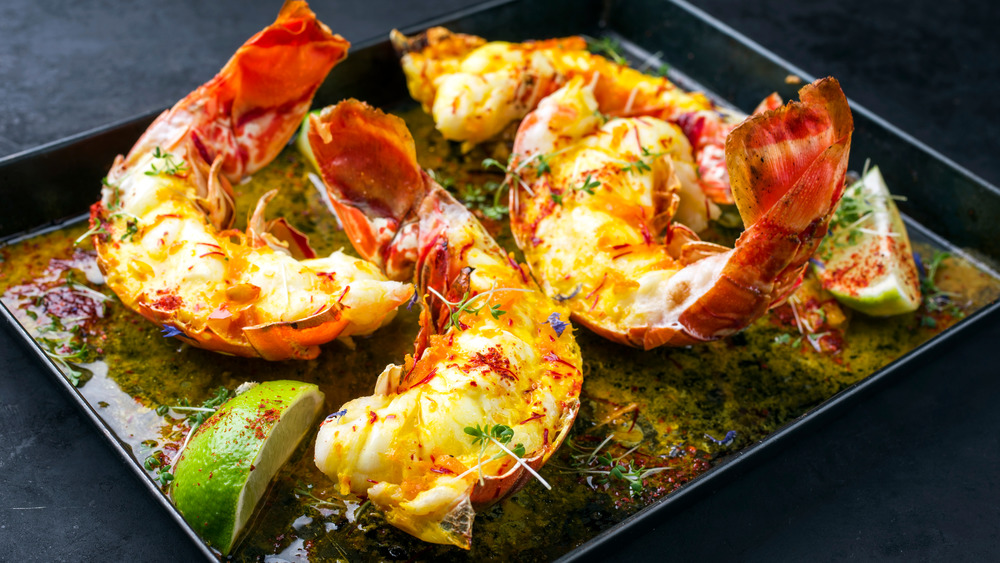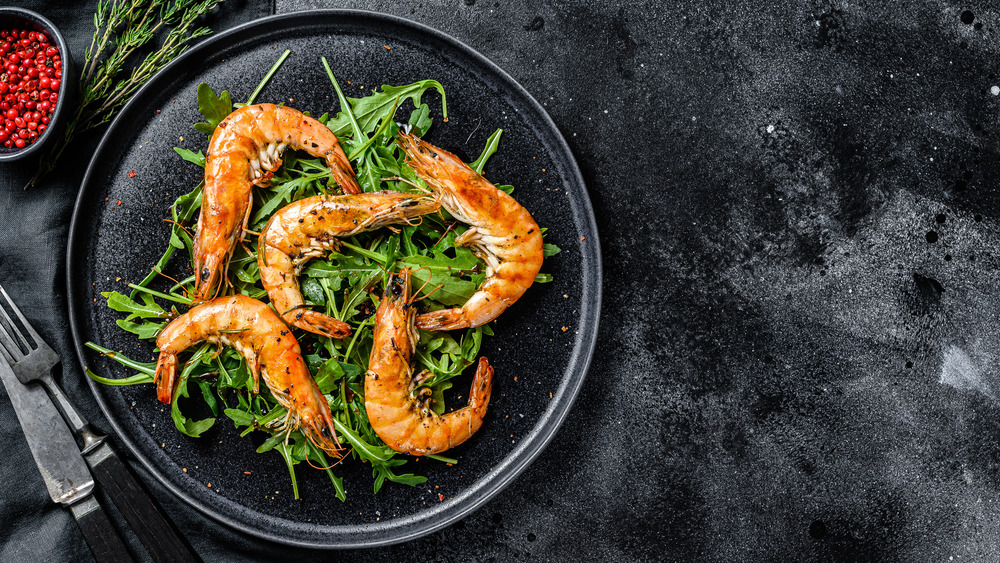Lobsters And Langoustines Are Less Alike Than You Thought
There are few things more luxurious — and delicious — than the familiar clawed crustacean we call lobster. Served with melted butter, on a toasted bun, or cooked in a rich bisque, you might not think twice about enjoying this American delicacy for a special occasion or out at a seafood restaurant. But have you ever considered the many relatives of lobster, and what you might be getting if you order something that only seems like lobster? If something smells fishy to you, it probably is.
Here's the problem: lobster is expensive. And some restaurants that serve seafood will fudge the name of a dish that contains a lesser crustacean or a cheaper fish to save on their costs, as one writer investigated in the Houston Press. On the other hand, as expensive as lobster is, some of its cousins are even more costly, but appeal to more upscale dining venues for their unique texture and taste (via Bon Appetit). It's worth it to know the difference, because no one likes being bamboozled by a dinner plate.
Know your crustaceans: the difference between a langoustine and a lobster
So here's the deal: "langoustines" are not lobsters, and neither are "langostino," though you may see them pop up on menus or in stores from time to time, including — we noticed — on Red Lobster's menu in dip form as "Langostino Lobster-Artichoke-and-Seafood Dip." Langostino are in the same order as American and spiny lobsters, but in a different infraorder, a subcategory that langostino share with hermit and porcelain crabs (via SeafoodSource). They're much smaller and have a texture closer to shrimp, but taste similar. When you see them on a menu, they likely came from Chile, El Salvador, or New Zealand (via SeafoodSource). They're also much cheaper for restaurants.
Langoustines, on the other hand, are what Bon Appetit called "the new marker of haute cuisine." These small, pinkish critters are found in the North Atlantic waters of Iceland, Norway, or Scotland, and as one chef put it to the outlet, "have a more complex and delicate taste than lobster. The flavor is sweet, elegant. Lobster is rustic by comparison." They're also claw-free, and much more expensive (via Bon Appetit). Citarella, the iconic New York seafood market, for example, sells just two pounds for $84.99. Two and a half pounds of lobster there, on the other hand, goes for $39.99.

